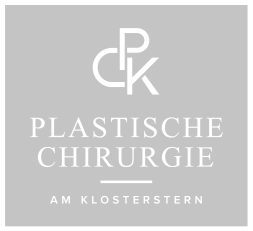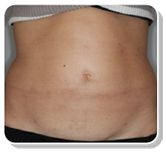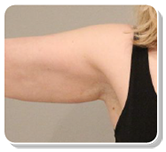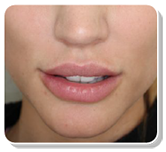Treatments for Excessive Sweating
Offered at our convenient location in Hamburg

Excessive sweating, or hyperhidrosis, is a frustrating and embarrassing condition that adversely affects the everyday lives of sufferers. Botox injections have been proven to effectively treat this condition by blocking the nerve signals that trigger sweat production. This treatment is safe, minimally invasive, and can provide relief for up to six months.
At Plastische Chirurgie Hamburg, experienced plastic surgeon, Dr. Dalia Tobbia, offers Botox injections to treat hyperhidrosis. The procedure is performed at her state-of-the-art facility and typically takes less than 30 minutes to complete.
If you suffer from hyperhidrosis, don’t let it hold you back any longer. Contact us today at +49 (0) 40 46 091 076 to schedule a consultation with Dr. Dalia and learn how Botox can help you regain your confidence and improve your quality of life.
Contents
- 1 About Hyperhidrosis
- 2 Can Botox Help?
- 3 What Other Options Do I Have?
- 4 What is Iontophoresis?
- 5 Benefits
- 6 Candidates
- 7 Personal Consultation
- 8 Procedure
- 9 Results
- 10 Cost of Excessive Sweating Treatment in Hamburg
- 11 FAQ
- 11.1 Is excessive sweating hereditary?
- 11.2 How do I prepare for Botox hyperhidrosis treatment?
- 11.3 How soon can I resume my daily activities after botox treatment for hyperhidrosis?
- 11.4 Can liposuction help with excessive underarm sweating?
- 11.5 Is there a surgery that can help me with excessive sweating?
- 12 References
About Hyperhidrosis

If you sweat more than the average person, it may be time to find out if you have hyperhidrosis. An estimated 16.3% of people in Germany suffer from the condition. (1) This translates to over 13 million sufferers in this country alone. It can occur in various parts of the body, including the palms, underarms, face, and feet, and can be caused by a variety of factors such as genetics, medical conditions like an overactive thyroid, menopause, anxiety, and stress.
Hyperhidrosis occurs when the nervous system stimulates the sweat glands to produce more sweat than is necessary for body temperature regulation.
Hyperhidrosis can arise in individuals who are otherwise healthy and suffer from no other underlying conditions. This seemingly minor condition can have significant psychological and social consequences. It can negatively affect self-esteem and comfort in social and professional settings. It may also cause conditions such as bacterial infection, muscle cramps, or dermatitis.
There are two types of hyperhidrosis.
Primary Hyperhidrosis
Also called focal hyperhidrosis, this version of the condition means people sweat excessively from the underarms, face, and hands for no apparent reason. It is diagnosed using the following criteria: (1)
- Occurs without a known cause
- Lasts 6 months or more
At least two of these features are present:
- Impairment of daily activities
- Sweating on both sides of the body
- More than once a week
- Positive family history
- Onset before the age of 25
- Sweating stops when asleep
Usually, sweat from primary hyperhidrosis comes from specific sweat glands, the eccrine sweat glands. Doctors are currently unsure what specifically causes primary hyperhidrosis. It may be hereditary.
Secondary Hyperhidrosis
Also called general hyperhidrosis, this variation of the condition leads to excessive sweating over the entire body and may be triggered by environmental conditions or medications. The major difference between secondary and primary is that in general (secondary) hyperhidrosis, the entire body will sweat and sweat can often occur during sleep, which doesn’t usually happen with focal hyperhidrosis. Potential causes can include pregnancy, obesity, diabetes, hyperthyroidism, anxiety, Parkinson’s, and lymphoma. In these cases, treatment for the underlying condition is essential to reduce the symptoms of excessive sweating.
Usually, secondary hyperhidrosis is caused by a specific medical condition.
To determine which type of hyperhidrosis you might have, it’s crucial to have a consultation and examination with Dr. Dalia. Treatment strategies are usually employed in an escalating manner. Patients will begin with minimally-invasive treatments and then advance to a surgical approach if the need arises.
Can Botox Help?

Botox (also known as BTX) is a well-known anti-aging treatment used cosmetically to smooth the appearance of wrinkles and lines in the face. However, there are many other uses for the neuromodulator. Injections are a safe and effective way to treat excessive sweating by temporarily blocking the nerve signals that stimulate sweat production.
Botox is used in many other medical settings including treatments for cervical dystonia (neck spasms), overactive bladder, and amblyopia (lazy eye). (2)
What Other Options Do I Have?
There are several other treatments available to manage hyperhidrosis, including the following:
- Topical Antiperspirants
- Iontophoresis
- Laser Treatment
- Surgery
What is Iontophoresis?
First used in the late 1960s, iontophoresis is a non-surgical treatment method that involves using a small electrical current to deliver medication or other substances through the skin. This technique has proven to be highly effective in treating hyperhidrosis (excessive sweating), particularly in the hands, feet, and underarms. However, daily treatment is required for optimal results.
Arguably the most effective, least invasive, and simplest treatment for hyperhidrosis is Botox injection.
Benefits
- Quick and virtually painless procedure
- Reduction in excessive sweating
- Increased comfort
- Boost in self-esteem professionally and socially
- Improvement in psychological well-being
- Non-surgical treatment option no downtime required
- Results are long-lasting, typically up to 6 months
Candidates
The ideal candidate for Botox for hyperhidrosis is someone who has tried traditional antiperspirants and other treatments without success. They should also be in good overall health and have realistic expectations for the procedure’s outcome. During your consultation with Dr. Dalia, she will assess your medical history and determine if Botox is the right choice for you.
Personal Consultation
At Plastische Chirurgie Hamburg, we understand the discomfort and embarrassment that excessive sweating can cause. That’s why we offer Botox injections as a treatment option for hyperhidrosis. If you’re considering this procedure, your first step is to schedule a personal consultation with Dr. Dalia. During this initial visit, she will review your medical history and assess the extent of your condition. She will then create a personalized treatment plan for you.
If you’re interested in exploring Botox as a treatment option for hyperhidrosis, contact Plastische Chirurgie Hamburg today at +49 (0) 40 46 091 076 to arrange your visit with Dr. Dalia. She will answer all of your questions and help you determine whether this procedure is right for you.
Procedure
Dr. Dalia will determine the areas to be treated based on your specific needs. The most common areas are the underarms, hands, feet, and forehead. The procedure itself takes only a few minutes and involves several small injections into the affected area.
After the procedure, you may experience some minor swelling or bruising, but these side effects typically subside within a few days. You can expect to see a significant reduction in sweating within the first week after treatment, with results lasting up to six months.
It is important to note that while Botox for hyperhidrosis is a safe and effective treatment, it is not a permanent solution. You may need to repeat the treatment every few months to maintain its effects. Dr. Dalia will discuss all aspects of the treatment with you during your consultation, including potential risks and benefits.
Results
If you suffer from hyperhidrosis, Botox injections can be a life-changing solution. After your treatment, it’s important to avoid rubbing or massaging the treated areas for at least four hours. It’s also recommended to avoid strenuous activities and excessive heat exposure for the next 24 hours to ensure the best possible results. Mild swelling, redness, and bruising are common side effects that should subside within a few days. Dr. Dalia will provide you with aftercare instructions tailored to your individual needs.
The results of your Botox treatment for hyperhidrosis can last up to six months, but this varies from patient to patient. You’ll notice a significant reduction in sweat production and feel more confident in social situations.
Cost of Excessive Sweating Treatment in Hamburg
At Plastische Chirurgie Hamburg, we are committed to providing our patients with the highest level of care and expertise. If you are interested in learning more about Botox for excessive sweating or would like to schedule a consultation, please give us a call at +49 (0) 40 46 091 076 or complete an inquiry form. We look forward to hearing from you and helping you find relief from excessive sweating.
For more information about procedures at Plastische Chirurgie Hamburg, read Dr. Dalia’s blog.
FAQ
Is excessive sweating hereditary?
There are many causes of excessive sweating, including medical conditions, stress, and overexposure to heat. However, where there is no apparent reason for excessive sweating, it is thought that there is a genetic component.
How do I prepare for Botox hyperhidrosis treatment?
Patients should avoid drinking alcohol and smoking at least 24 hours before the procedure. They should also inform their plastic surgeon about any medications they are taking, as some medications may increase the risk of bleeding.
How soon can I resume my daily activities after botox treatment for hyperhidrosis?
Patients can resume their daily activities immediately after the procedure. However, it is recommended to avoid physical activities and hot environments for at least 24 hours after the injection.
Can liposuction help with excessive underarm sweating?
Liposuction to remove overactive sweat glands is not always successful. The glands are extremely deep and can regenerate, making it a less effective option for patients.
Is there a surgery that can help me with excessive sweating?
Surgical procedures that involve the removal of axillary skin and performing transposition flaps are only recommended in very extreme cases. In less severe instances, Botox treatment and topical antiperspirants may be more fitting.
References
- Doolittle J, Walker P, Mills T, Thurston J. Hyperhidrosis: an update on prevalence and severity in the United States. Archives of Dermatological Research. 2016;308(10):743-749. doi:https://doi.org/10.1007/s00403-016-1697-9
- Padda IS, Tadi P. Botulinum Toxin. PubMed. Published 2021. https://www.ncbi.nlm.nih.gov/books/NBK557387/





